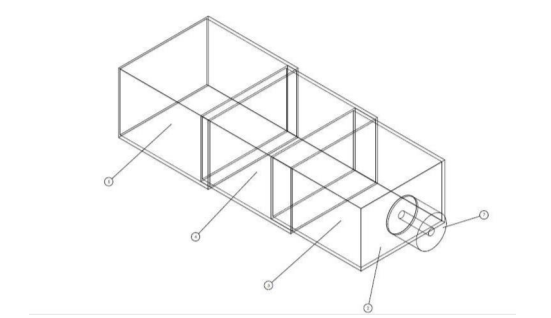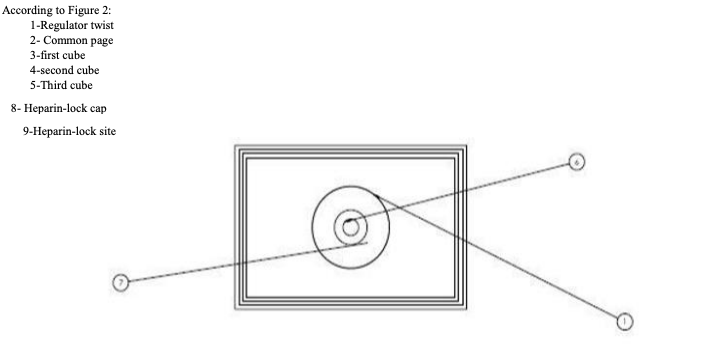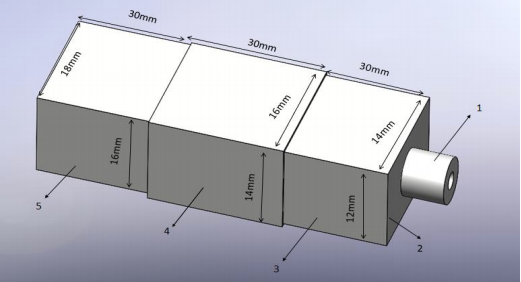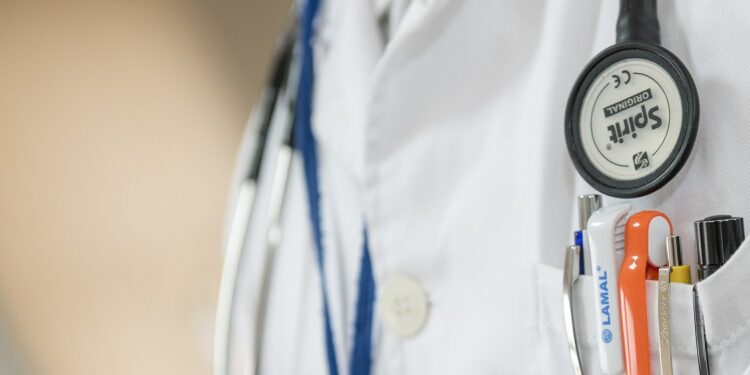Health from perspective of the world health organization: the science and the technique of preventing, presenting medical services for immediate diagnosis, treatment and growth in solving problems. Safety is one of the most important health factors in health and medical systems . In health and medical system, the members of medical team are under physical and mental pressures that cause decreased therapeutic performance, moral harm and financial damage. Dipping the infected needle tip (NSIS), is one of the most current cause of physical, pathology and psychological risks for medical staff. Needle stick: skin injuries caused by hypodermic syringes and other needle equipment that are contaminated by the patient̕s blood or other ejections, or injuries by sharps which are often due to breaking off a needle or other sharps contaminated by blood or other ejections. Some of the most important reasons for needle stick are: working in the intensive care units (OR, RR, ICU…), encountering stressors, compulsory working overtime morning shifts and using needle cap again. These injuries are usually caused by carelessness and negliance in contact with sharps that can be generally prevented. Using safe needles can help preventing needle stick by 80 percent. People who deal with sharps in medical center include: nurses 44%, doctors 28%, laboratory personnel 15% and other services (cleaning and office staff, researchers and students) 13%, who are exposed to needle stick. Armstrong and his colleague in their research express that with improving hospital efficiency, safety culture for patients can be boosted [16]. According to a Japanese research in Saudi Arabia, Martins in Portugal , Nakhlahmadi in Iran, and Alamgir in Canada , nurses are exposed to needle stick more than others. From 35 million medical staff, about 2 million are exposed to pathogens through injury. From this 2 million 740000 are exposed to Hepatitis B, 780000 are exposed to hepatitis C and about 170000 to HIV virus, which at this moment, more than 90% of these injuries happen in the developing countries .Expanding diseases caused by needle stick is such as, risk of hepatitis transmission 37%, 16B, hepatitis C 39%, and Aids 4/4% . There are also other diseases like blast mycosis, Malta fever, Toxoplasmosis, Cryptococcus, Ebola, Syphilis, Malaria, and Rocky Mountain spotted fever. Needle stick can cause an increase in direct and indirect costs for medical system. According to researchers in united states, costs of treatment arising from needle stick for people without considering important diseases (HIV, HSV, HCV) are estimated about 2500 to 4000 dollars . Some approaches for preventing needle stick are changing the policy of hospitals, training, and using medical instruments. In other research, some prevention approaches are using safe needles. Now, considering the subject matter and results of researches, one of the ways of preventing needle stick is using protectors like anti needle protectors which are used for preventing needle stick and ejection from the exit needle place to safety box that is designed and manufactured. We’ll talk about it̕ s structure in the following.
METHODS:
This project started with a new researcher idea then by searching in the scientific content of articles and book, the title and proposal the project was compiled with opinion of the supervisor. Then model of the device was designed in collaboration with graphic & mechanical engineers Fianccy. The main tool was invented by the researcher. This device is designed with solid work software by mechanical engineer and software developer and with science- theorical submission of the researcher (Mahmoudi) about making a device that can exit the infected needle and put it in the needle guard without exposing to the infected needle during the entire injection. The capacity is just for one needle presently (it will increase after it’s made), so the person using this device puts the needle in the safety box that can be able to be used again. This idea was designed by solid work software and then the file of that was transferred to the lab by researcher and mechanical engineer for hardware designing and replica. Anti-needle stick replica was checked in terms of morphology all aspects, shape, and size, according to the needle syringe and standard needle angio catheter (shape 1), and it was designed again by a software developer, after changing shape and size (shape 2). After designing, the file was given to 3D printer model (season 4 desktop) and then the device intended were made. The material was plexiglass (transparent polycarbonate). It will address the components and performance of the protector in the following: Anti needle stick protector is made of three cubes, (first cube: length: 30mm, width: 14mm, height: 12mm, the second cube: length: 30mm, width: 16mm, height: 14mm, third cube: length: 30mm, width: 18mm, height: 16mm), a regulator twist (shape 1, number 1), a rotary plate7 (shape 2, number 6), and heparin- lock cap (shape 1, number 8). At first, 3 cubes (shape 1, number 3, 4, 5) are placed into each other (like the following mugs) and rotary plate (shape 2, number 6), sets up on the angio catheter needle. After adjusting and fastening, the nurse takes out the needle of angio catheter, and then cube number 2 (shape1, number 4) and cube3 (shape 1, number 5), move forward by the nurse̕ s other hand. So, the needle locates into the protector. Heparin- lock cap (shape 1, number 8) that is placed on the third cube (shape 1, number 5), moves down after third cube is completely open and then covers the front part. After taking out the angiocatheter and opening the third cube by the nurse, (shape 1, number 5) and then moving down the heparin- lock (shape 1, number 8) he/she prevents bleeding by putting heparin cap on the angiocatheter. Heparin-lock site (shape 1, number 9) is on the heparinlock cap (shape 1, number 8), and the heparin- lock is installed before the heparin- lock cap is moved down. The other function of needle angiocatheter protector rail chamber with heparin- lock is preventing needle stick by syringe. After connecting the needle to the syringe, the nurse puts the needle tip, that is covered by needle cap, on the rotary plate (shape 2, number 6). After fastening the needle cap with rotary plate (shape 2, number 6), the nurse moves the first cube (shape 1, number 3) and second cube (shape 1, number 4) toward syringe with his hand, that causes covering the length syringe and placing it into the case (protector). The nurse does the injection with taking out the needle from the cap and then without touching the needle, returns it to the cap that is inside the case (protector). And after completely placing the needle into the cap by rotating the body of the syringe, needle with it̕s cap disparts from syringe and remains into the case(protector) (the nurse̕ s hand is on the outer surface of the case (protector), when needle is rotating). With transferring the case to the top of safety box and opening the regulator twist (shape 1, number 1), the cap containing the needle, releases from the rotating board (shape 2, number 6), and transfers to the safety box and thus the nurse̕ s hand definitely won̕ t touch the needle and it̕s cap


According to Figure 3:
1- Regulator twist
2-rotary plate
3-Rotary plate axle

According to Figure 4:
1-Regulator twist
2- Common page
3-first cube
4-second cube
5-Third cube
Discussion
This research has been done in the field of medicine and medical engineering. Due to the extent of the needle spread of medical staff when providing medical care to the drug, the use of preventive equipment is felt to prevent this problem. The purpose of designing this anti-needle stick is to reduce the needle rate of caregivers. Due to the innovative design of this design, it can be used for both needle angiocatheter and syringe
needle. Advantages of this design include use for both angiocatheter and syringe, small size and portability, sterility, complete disposal of the needle without touching the hand, low cost and economic due to the
financial losses caused by the needle stick. Also, according to the researchof Livia et al. (2018), a study entitled Needle stick with safety devices and its prevention with an integrated structure [32], and this research, the use
of preventive equipment to prevent needle stick is suggested. Result of this study and other surveys can be one of the most effective ways to prevent needle stick. Also using safe protectors can decrease it significantly. Besides, modifying the preventive policies such as producing instruments like anti needle stick protectors is recommended. We are ready to cooperate with all institutions and individuals in the fields of economics, education, research and health for this idea. If you wish, please contact us via [email protected] email.
Conclusion:
This device is protective for group therapy that reduces nieedle stick by up to 98% during Interamuscular, intravenuos and subcutaneous injection. As a result, it causes significant reduction of diseases that can
be transmitted by this methode such as hepatitis B& C and AIDS, etc. This tool can be produced in different sizes and Shapes for all of type injection and applications in operating room ,hospital wards, emergency and out patient injection rooms. The researcher also has the scientific ability to produce this medical device In digital format.
Author:Mohammad Masoud Mahmoudi
































